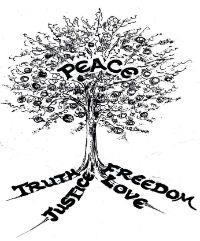
The Nuclear Morality Flow Chart
Ten years ago Tony Blair launched the present Trident renewal project with the thought that “giving it up [would be] too big a downgrading of our status as a nation”. Nuclear weapons are not simply deterrents (some people say they are not deterrents at all) and no-one doubts that they are deployed for reasons of prestige and strategic power politics. However the concept of deterrence is still central to any moral justification that is made for them. Indeed morally they have only this one leg to stand on. As the world moves on from concerns with superpower security to humanitarian consequences and “ethical imperatives”, the moral case has never been more important. Though opposed by an increasing number of people, and by decades of clear (and some less clear) teaching of the Christian churches, the Cold War gospel of nuclear deterrence persists unchallenged in most people’s minds. We could say that people have to change their own minds.
Martin Birdseye has designed a method for individuals to work through moral decision making about nuclear weapons.This is the thinking behind the Nuclear Morality Flowchart – a logical decision tree of the relevant moral and practical questions that are necessary for a rational, personal decision on the ethics of nuclear deterrence. You can try it on-line at:
Now as parliament approaches decision time on the Trident renewal programme, seemingly locked into the deterrent mindset, there is another role for the Flowchart. On 21st April it will be the basis for a meeting to brief MPs on the ethics of nuclear weapons. (See attached flyer) We hope this will help them to confront the moral dimension of this critical issue. The flowchart also gives them the option of demonstrating their thinking to their constituents. Ask your MP to try it and then send you his or her decision path. The special software makes this easy.
This article appears in the Summer edition of NJPN Newsletter



